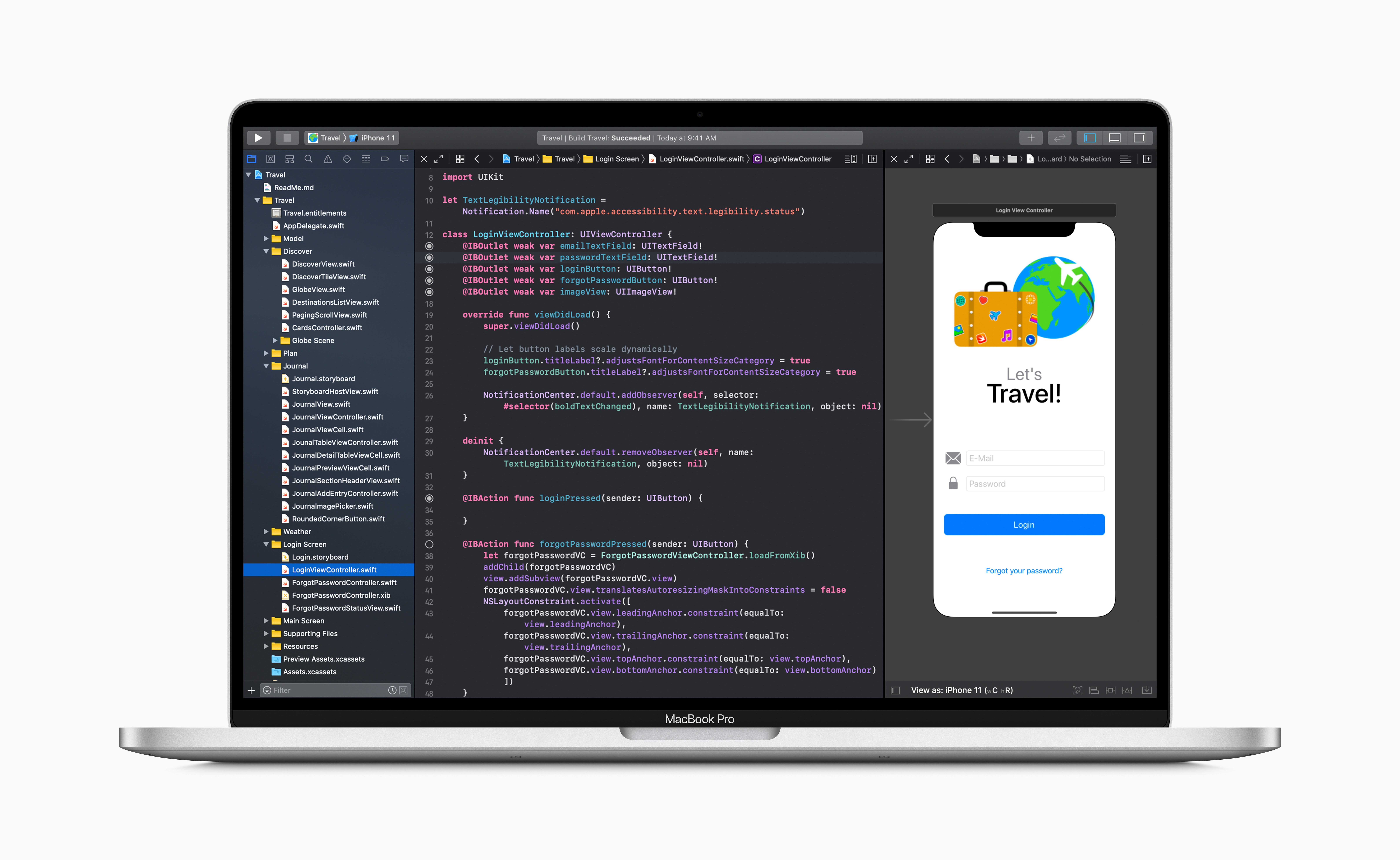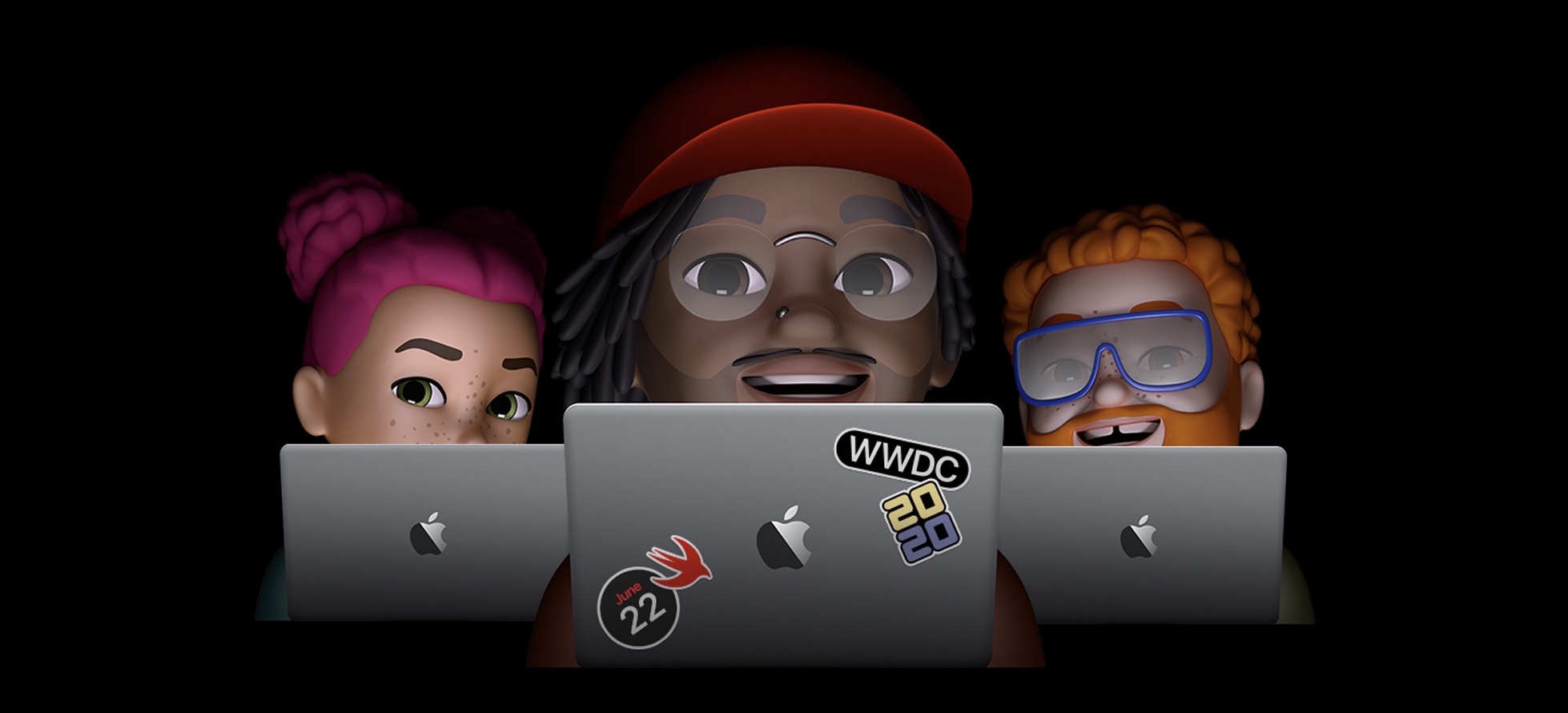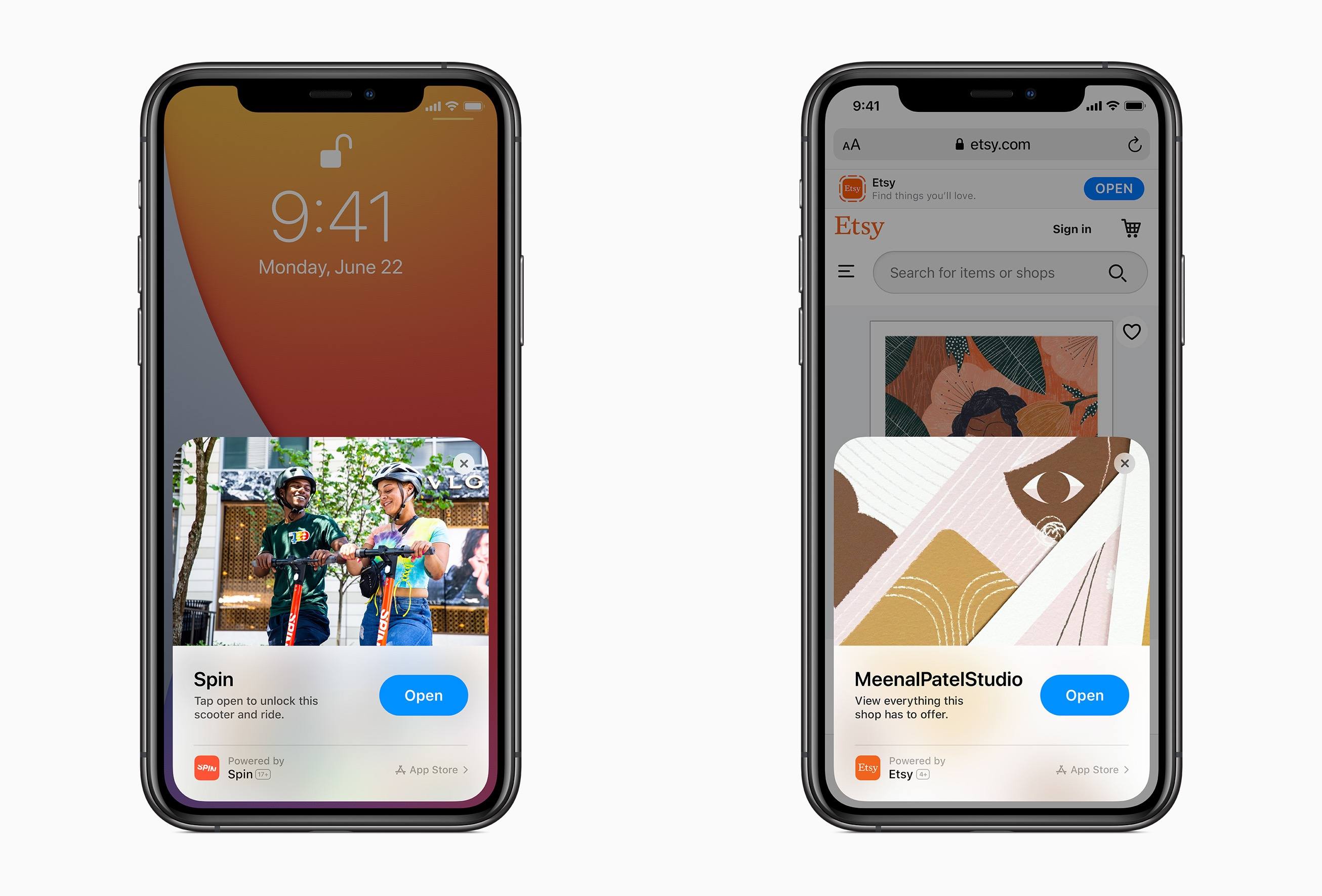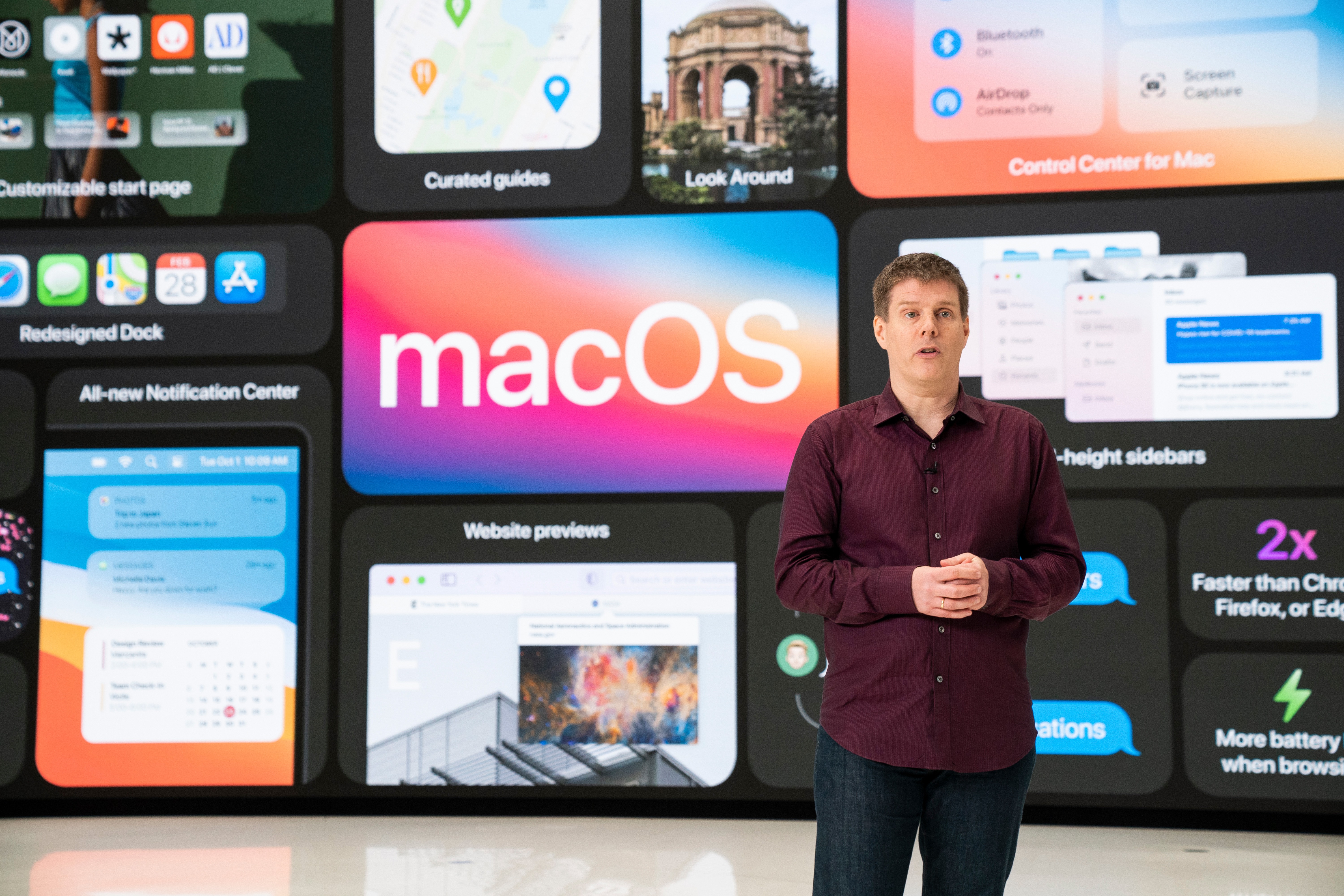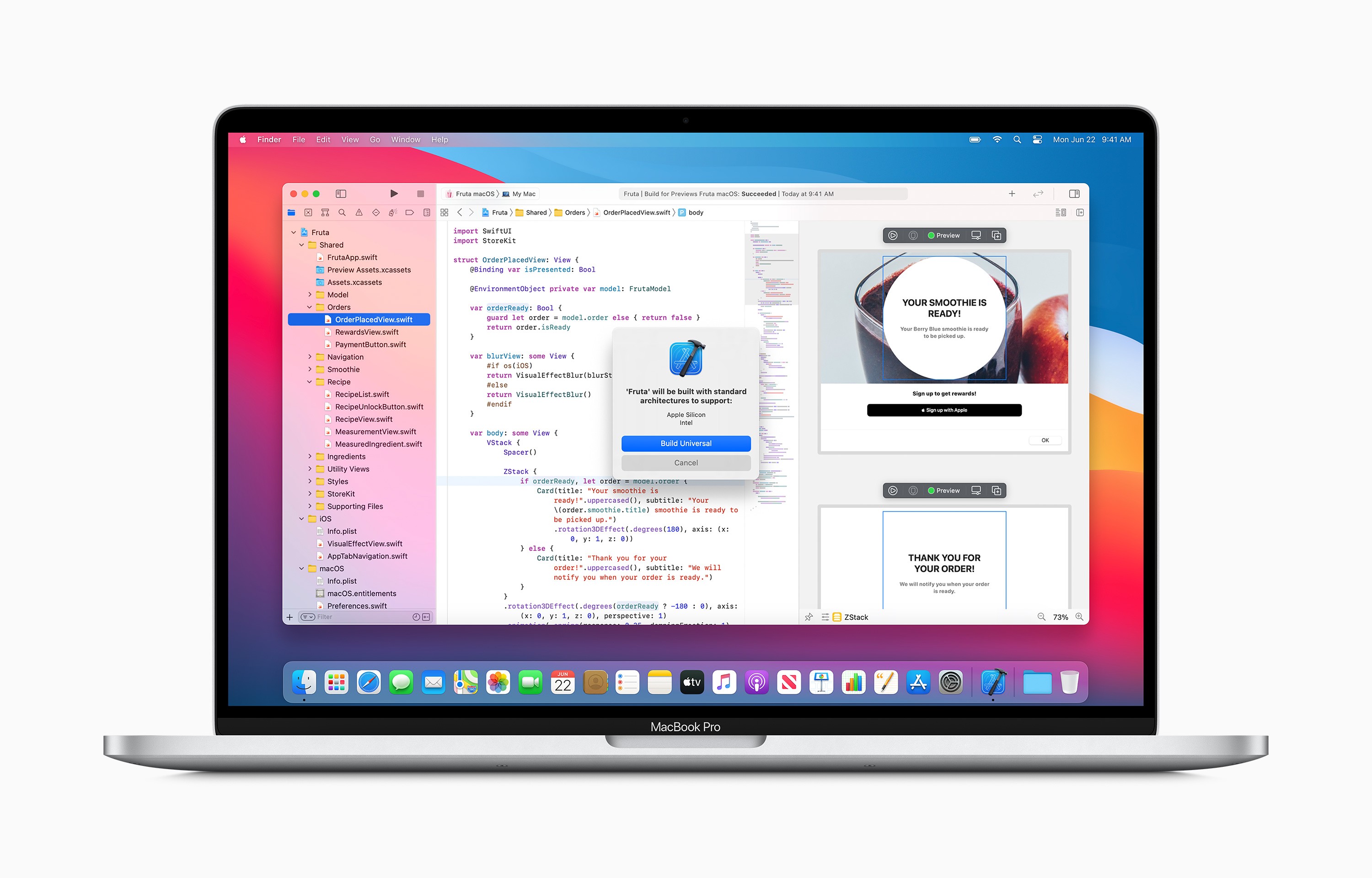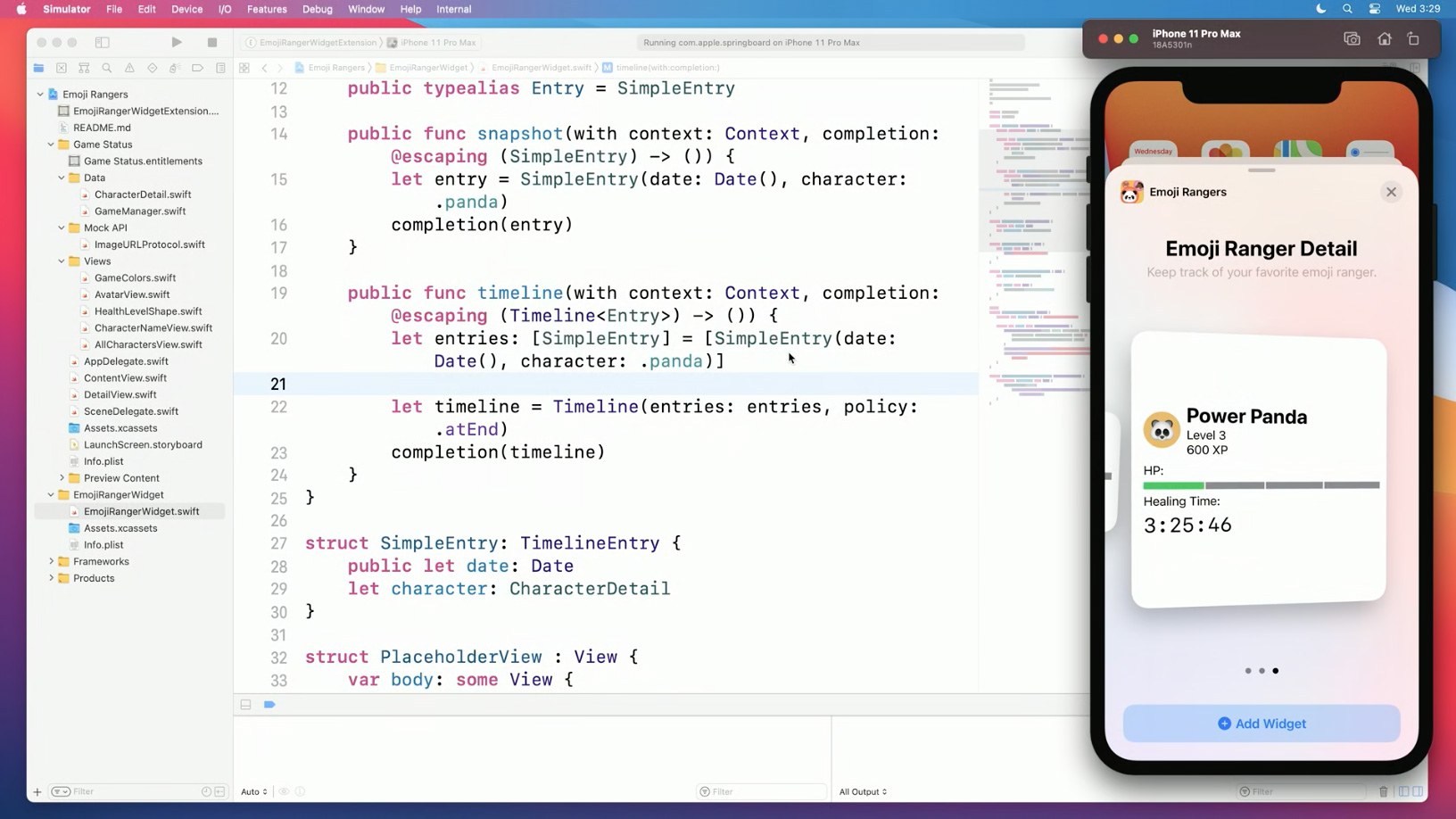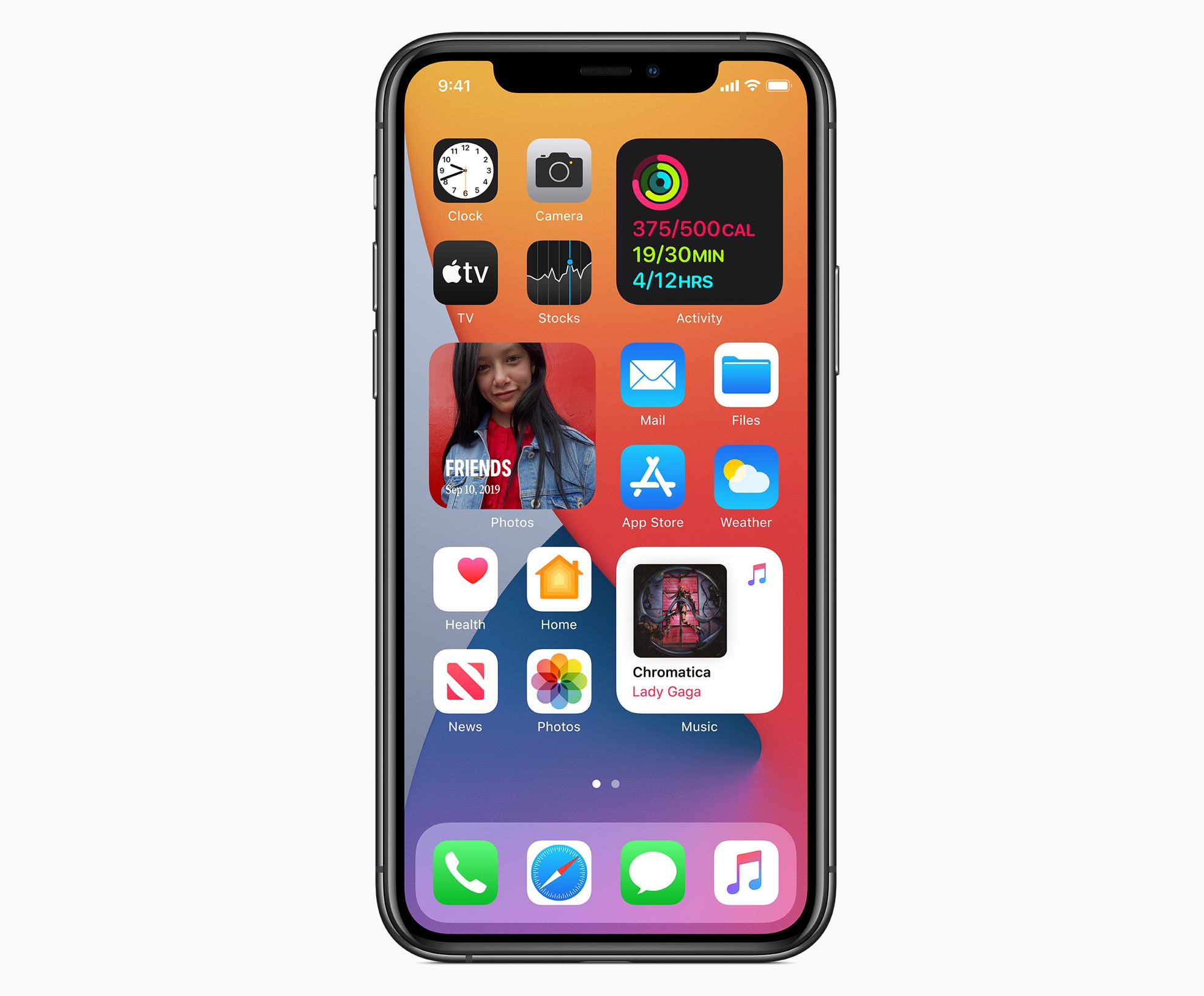Weeks removed from Apple wrapping up its first all-virtual WWDC, many of us are still digesting what the conference’s announcements mean for the future of our favorite products.
Federico, John, and I have all shared various takeaways from the conference, and I’m sure we’ll have a lot more to report as we continue using the betas this summer and review Apple’s OS updates this fall. But our perspective is limited to our profession as journalists, so we also wanted to hear from the people this conference was really built for: developers.
WWDC has grown into an exciting conference for Apple users all around the globe, but its core identity is still ultimately an event for app developers. As a result, I wanted to speak with a variety of developers to get their reactions to the conference. These included:
- Becky Hansmeyer, creator of Snapthread and YarnBuddy
- Charlie Chapman, creator of Dark Noise
- David Smith, creator of Watchsmith, Sleep++, and many more apps
- James Thomson, creator of PCalc and Dice
- Kaya Thomas, creator of We Read Too and Sr. iOS Engineer at Calm
- Simon Støvring, creator of Scriptable, Data Jar, and Jayson
My sincere thanks to these developers for taking the time to share their thoughts, and for their years of valuable contributions toward making Apple’s app ecosystem as strong and robust as it is today.
Interview questions for each developer ranged from the things that most excited them at the conference to surprises and disappointments, their read on how in-touch Apple is with the developer community, the current evolution of software development, and each developer was also generous enough to share a sneak peek at new technologies they’re working to implement in their apps.
Excitement, Disappointment, and Surprise
When I asked about the biggest positive takeaways from WWDC, most developers focused on the conference itself. David Smith summarizes their feedback well:
“The experience was without a doubt one of my favorite yet. The clarity and personality of the pre-recorded videos was excellent. The Labs experience was just as useful as during in-person events. Even the sense of community felt way better than I would have predicted. I really liked this format and hope that Apple incorporates most of it in future years.”
In terms of specific announcements, a highlight for Kaya Thomas was App Clips, the new technology that enables small pieces of app data to be accessed on-demand without installing a whole app. Thomas said of the feature:
“It’s something I would have never guessed was coming and is a really innovative new experience for helping with discovery of apps. It’s not a use case that works for every app, but for the apps it does, it will allow developers to worry less about the drop-off rate that comes with the user having to go to the App Store to download your app.”
Many developers were enthused and surprised by all of the Mac-related news from the conference.
Charlie Chapman:
“Between all the Catalyst improvements, SwiftUI, and iPhone apps coming straight to the Mac with Apple Silicon, it feels like the Mac is being opened up as a platform for iOS developers, and that’s really exciting. Seeing the Mac get so much love and attention this year was definitely a highlight, and I think we’re about to see a lot more activity in Mac software than we’ve seen in a while.”
Becky Hansmeyer:
“I was most surprised by the macOS redesign. I was so focused on the transition to Apple Silicon that it never occurred to me they would drastically change the look of the OS this year. I was also pretty surprised by the automatic availability of iOS apps on the Mac.”
James Thomson:
“Catalyst got very welcome changes this year, and even a shout out in the keynote. It looks like almost everything I was asking for a year ago has now been added, which is great. And the fact that Apple was using it for Messages, one of their most important apps, gives me confidence I can rely on it sticking around.”
But there were also, of course, some disappointments. Again there was a lot of commonality among developers, with changes in widget functionality being a common concern. For example, Thomson confirmed he won’t be able to ship a new widget with the same feature set as his existing one:
“A lot of people love the existing PCalc widget, and I’m sad that it will eventually have to go away – maybe not this year, but probably next, [due to] the new widget architecture not allowing complex interactivity.”
Simon Støvring shared his hope that, with so much happening on the Mac, this would have been the year the platform gained Shortcuts:
“I felt confident that we would get Shortcuts on the Mac, and with everything else Apple announced this year, I think it would fit right in. We’ll certainly see more iOS and iPadOS apps coming to the Mac soon, if not because of the new additions to Catalyst and SwiftUI, then because these apps will be available when Macs with Apple Silicon are released – these iOS and iPadOS apps would come with shortcuts built in.”
Kaya Thomas was let down by another year’s absence of a key developer tool:
“I was most disappointed that there was no announcement of any new continuous integration/delivery tooling. Since Apple acquired Buddybuild a few years ago, every year I’ve hoped there would be an announcement of what they’ve done with it. There are a lot of continuous integration/delivery services out there, but it would be incredible to have a complete native solution made for Apple platforms.”
Is Apple Listening?
Apple has a notorious penchant not only for secrecy, but also for doing all of its product work in seeming isolation from the outside world. Users and developers alike are often left wondering if the company truly listens to feedback or not, an issue exacerbated by the fact that it often takes years of behind-the-scenes work for Apple to address such feedback. We all love a good Apple surprise, but for developers in particular, whose livelihood is tied to the choices Apple makes, being left in the dark can be scary.
WWDC is usually the prime occasion for Apple to show the development community that it’s listening, as the company unveils new OS versions, frameworks, APIs, and other tools designed to empower making the best apps possible. Following the 2020 virtual conference I asked developers whether they felt heard by Apple this year. Unsurprisingly their answers varied, and in some cases depended on what those developers were hoping for.
Simon Støvring, for example, was encouraged by the significant investment he sees from Apple into areas that are central to his apps:
“In the past few years I’ve been working quite a lot with the Intents and IntentsUI frameworks, Apple’s frameworks that let developers integrate with Siri shortcuts, and it is clear to me that in 2019 and 2020 those frameworks received major improvements to accommodate the needs of developers.
Examples include the support for input and output parameters that were added to Shortcuts in iOS 13, which was probably at the top of most Shortcuts users’ and developers’ wish list. Not only did Apple add support for parameters, but they also provided a very flexible solution.
Another example is the in-app intent handling that was added to iOS 14. This new API lets developers implement Shortcuts actions that are more powerful than previously, something I’ve heard several developers wish for since the introduction of Shortcuts in 2018.”
The common tendency to judge Apple’s progress by its relevance to your own projects highlights the reality that no matter how large the company grows, it can’t build everything every year. Kaya Thomas echoed this idea:
“It’s never 100% disappointment or 100% wishes fulfilled. There were still some disappointments regarding things developers were looking forward to, for example Apple announcing a new CI tool as a follow-up to their acquisition of Buddybuild. On the other hand, the new StoreKit testing capabilities was a long-awaited ask that they finally fulfilled.”
In terms of more general thoughts on how much Apple is listening, I found it interesting how commonality was found among those newer to the development community and those with longer histories working on Apple platforms. Everyone found Apple’s receptivity to developer feedback generally positive, but mentioned a few areas that can still lead to frustrations.
Representing that newer wave of developers is Becky Hansmeyer and Charlie Chapman.
Hansmeyer:
“I feel like Apple is definitely making an effort to listen to developers more; however, it still feels like there are several layers of corporate policy and bureaucracy (and perhaps stubbornness?) that make addressing developers’ concerns a very slow, frustrating process.”
Chapman:
“I haven’t been an Apple developer for very long so I can’t say for sure, but based on stories of the past it does seems like Apple’s a little more receptive to feedback from the developer community than they may have been before.”
Long-time developers James Thomson and David Smith see Apple’s attentiveness as largely the same as the past, but like Hansmeyer and Chapman, their views are generally balanced between optimism and realism.
Thomson:
“[Apple listens] a reasonable amount…pretty much the same as always. There is an element of “Apple knows best” to some of the changes, which you are expected to get on board with or be left behind, but that’s always been the case. In other areas though, there are definitely things where they have gone beyond what I even imagined they would.”
Smith:
“I’d say that they are listening to developers about the same as always. They are responsive and helpful in the fine-grained aspects of development, making changes and accommodations to their APIs based on our needs. But they also don’t often let the vocal complaints of parts of their development community distract them from their internal vision for the platform.”
The Unification of Software Development
A common theme of the last two WWDCs has been Apple’s focus on helping developers more easily build cross-platform apps. In the modern Apple ecosystem, it’s rare to find an app that’s iPhone- or iPad-only, and there’s a shrinking number of Mac-only apps too. Apple may not be merging its software platforms, but it’s doing a lot to make them work seamlessly in tandem.
Becky Hansmeyer remarks:
“This year’s WWDC has made me feel incredibly excited and optimistic about the future of Apple platforms. It finally seems like Apple has a cohesive vision for its platform line-up and a clear understanding of each device’s particular strengths and roles in people’s everyday lives.”
David Smith agrees:
“I feel very confident about the direction of Apple’s platforms right now. They have provided a cohesive vision for the future of their platforms from the Apple Watch to the Mac Pro. Many of the puzzle pieces that were required to make this happen have clearly been in the works for years and are now all falling into place. This foresight makes me feel good about the plans they have going forward and the thoughtfulness with which they are operating.”
Simon Støvring highlights a couple of those puzzle pieces as he echoes these comments:
“There are a lot of very exciting things going on right now. The unification, if not of the platforms then of the frameworks used by developers creating apps for the platforms, is very exciting. Now that we’re seeing the first year of iterations on SwiftUI and Catalyst, it’s becoming clear that they’ll play a big part in the future of Apple’s platforms. The opportunities for building fully native apps for all of Apple’s platforms is very encouraging.”
Summer Projects
As a big fan of the apps made by these developers, I couldn’t let them go without asking about the things they’ll be working on over the summer.
Kaya Thomas was one of many developers interested in building new widgets:
“I’m most excited about widgets, as a developer and consumer. Widgets being written in SwiftUI allows developers who can’t drop support for older OS versions to still be able to learn and use SwiftUI, which I strongly believe is the future of development for all Apple platforms. We aren’t limited by just having one widget and we can make them very configurable for our users. I think widgets will allow us to help save our users time by surfacing relevant and timely content right on their Home screens.
For We Read Too, I’m definitely exploring what a useful widget would look like, whether it’s showcasing the most recently added titles or a user’s recent favorited books.”
James Thomson is using one of his apps to experiment with things he may want to implement in a different app:
“I am currently investigating the best way to build a next generation version of PCalc, and there are multiple paths I could take. Right now, I’m updating Dice by PCalc – which is really my small test app for new Apple technologies – to use the latest Catalyst features to make a more Mac-like experience. I’ll then see how I feel about using that for PCalc, or if I want to rewrite it all in SwiftUI.
If I had an Apple Silicon DTK machine, I couldn’t tell you anything because of the NDA. But I can say I’m pretty confident this processor transition will go smoothly for both developers and users, and it will be a lot easier to port existing apps to ARM than it was to go from PowerPC to Intel fifteen years ago.”
Becky Hansmeyer just launched a new app, but WWDC has given her plenty of additions to her to-do list:
“My latest iOS app, YarnBuddy, is written entirely in SwiftUI. I can’t wait to update it with a modern UI for the iPad, utilizing the new sidebar, toolbars, date/time pickers and color picker. I’m also planning to create some widgets, and possibly even bring the app to the Mac using Catalyst.”
Charlie Chapman is at work on Dark Noise updates:
“Dark Noise will definitely get a few improvements thanks to new technology with iOS 14. The new widgets are way better than what I was offering before. In my testing so far, Siri integrations work much better than on iOS 13, and the “Maybe you wanted…” alternative responses were really easy to integrate with. The new Wind Down experience also feels like a pretty obvious fit for white noise apps like Dark Noise.”
David Smith has several major areas of focus moving forward:
“This year has introduced three new opportunities that I’m hoping to immediately adopt. The first is adding iOS widgets to all my apps wherever I can. Being given access to a user’s Home screen provides for a whole new level of connection to my users. I’m very excited to see where that goes.
Secondly, I’m really excited by SwiftUI complications on the Apple Watch. I can enhance my current suite of complications with dramatically better performance and ability.
Lastly, I’m for the first time interested in trying my hand at making a Mac app. The toolset previously was just too high of a wall to scale, but this year enough of the pieces have come together that it feels like something I could tackle with some confidence.”
Finally, Simon Støvring rounds out the list with a very ambitious project slate too:
“I’ve got a handful of things I’d like to do with my apps over the summer. WidgetKit is an interesting opportunity for Scriptable. I’m working on a feature that lets users create a script that presents a widget. The script will automatically run periodically on the Home screen to present up to date information. This immediately fulfills a need I have during the summer, as I’ve created a widget using Scriptable that shows me the pollen count of the day. As a person that has hay fever, that is very handy.
The new in-app intent handling is amazing for Scriptable, making it possible to use file bookmarks in a shortcut, process larger images in a shortcut, and generally perform operations that are more memory-heavy in shortcuts. I’m sure this is going to be a big deal for many Shortcuts utilities out there.
The new additions to Catalyst are going to be great for Jayson on the Mac, in particular. I’m looking forward to replacing Jayson’s custom implementation of tabs with the native tabbed windows on the Mac.
I’m also very curious to try out the new support for keyboard navigation in both table views and collection views, something I’ve already implemented myself in Jayson, but if Apple’s implementation works, I’m more than happy to replace it with my implementation.
Data Jar might also benefit from the new in-app intent handling. I will most likely also see how it can benefit from some of the new system and more modern UI components.
I’m also working on a new app in which I’ve already adopted the three-column split view. Support for three-column split views was on my WWDC wishlist, so I’m very pleased Apple has added it this year. I can’t wait for more iPad apps to adopt this.”
As I reflect on the takeaways from this group of developers, I think 2020 brought not only the most unique WWDC in recent years, but also one of the most important for Apple development. Fueled by the transition to Apple Silicon and a major UI redesign in Big Sur, Apple’s vision for the future of the Mac – the only platform where developers can currently build Apple apps – is clearer and more exciting than it has been in years. And with evolving tools like SwiftUI and Mac Catalyst, and new cross-platform OS features like redesigned widgets, it appears that Apple is on the cusp of doing something that’s been a challenge for the company for some time: moving its platforms forward in lock-step, with no platform neglected due to a scarcity of internal resources.
Besides surpassing my expectations for what a virtual conference could be, WWDC 2020 also made me optimistic that every Apple platform has a bright, exciting future ahead. That’s a great thing not only for developers, but also for every Apple user.
You can also follow our 2020 Summer OS Preview Series through our dedicated hub, or subscribe to its RSS feed.


